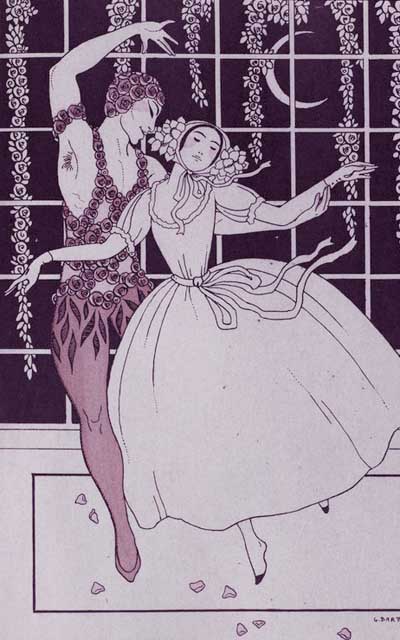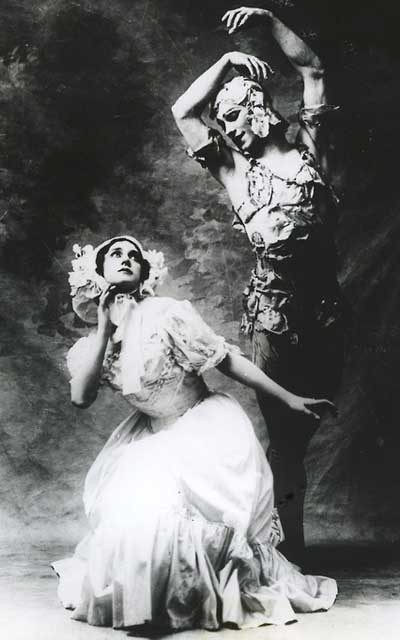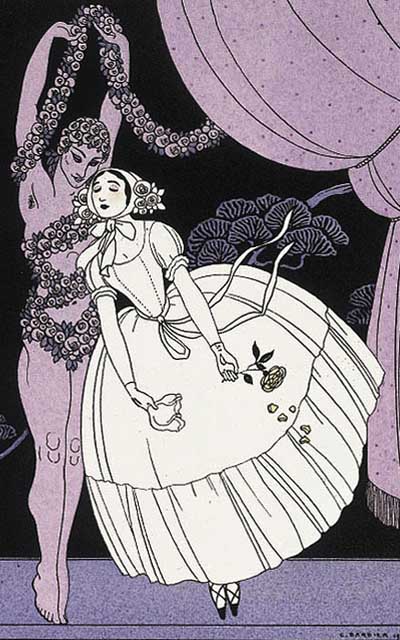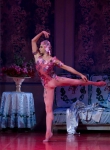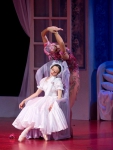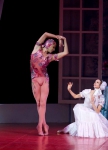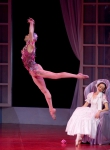Music by Carl Maria von Weber
Choreography by Michel Fokine (1911)
Concept: Jean-Louis Vaudoyer based on the poem by Théophile Gautier
Libretto: Michel Fokine
Costume design after original designs: Léon Bakst
Director:Andris Liepa
Set design: Anna Nezhny
George Barbier -" Le Spectre de la Rose", 1913
Photo: Vaslav Nijinsky and Tamara Karsavina in 'Le Spectre de la Rose', 1911
Photo: Vaslav Nijinsky and Tamara Karsavina in 'Le Spectre de la Rose', 1911
«Je suis le spectre d'une rose que tu portais hier au bal…» - Theophile Gautier
The idea to embed these verses in the music of Carl Maria von Weber’s Invitation to the Dance occured to Jean-Louis Vaudoyer. Having introduced Mr. Fokine to M. Gautier, he made himself famous in the history of ballet. Le Spectre de la Rose won great success when presented on June 6, 1911 in Paris, and became a true chef-d'oeuvre of impressionism in dance. The sets and costumes of Leon Bakst evoking a romantic atmosphere of the early Nineteenth Century, added to its success. Tamara Karsavina, dressed in a luxuriant white dress and a ribboned bonnet, appeared as the incarnation of a poet's dream, winning his heart – and the audience’s by a mere flutter of soft lashes. Vaslav Nijinsky, in elegant headdress and tights decorated with silk rose-petals (which his admirers used to cut off as souvenirs) embodied the airy spirit of a delicate scent of a flower. In the final scene, the dancer jumps out of the window of the room as if it was a jump into eternity – a bold move which fired the imagination of Chaliapin, Cocteau, Rodin and all the spectators.
The idea to embed these verses in the music of Carl Maria von Weber’s Invitation to the Dance occured to Jean-Louis Vaudoyer. Having introduced Mr. Fokine to M. Gautier, he made himself famous in the history of ballet. Le Spectre de la Rose won great success when presented on June 6, 1911 in Paris, and became a true chef-d'oeuvre of impressionism in dance. The sets and costumes of Leon Bakst evoking a romantic atmosphere of the early Nineteenth Century, added to its success. Tamara Karsavina, dressed in a luxuriant white dress and a ribboned bonnet, appeared as the incarnation of a poet's dream, winning his heart – and the audience’s by a mere flutter of soft lashes. Vaslav Nijinsky, in elegant headdress and tights decorated with silk rose-petals (which his admirers used to cut off as souvenirs) embodied the airy spirit of a delicate scent of a flower. In the final scene, the dancer jumps out of the window of the room as if it was a jump into eternity – a bold move which fired the imagination of Chaliapin, Cocteau, Rodin and all the spectators.


